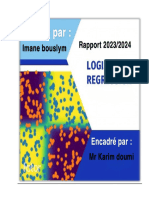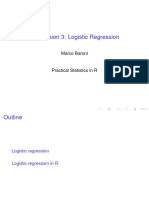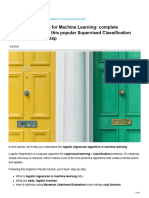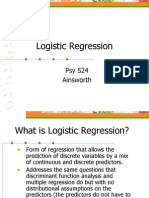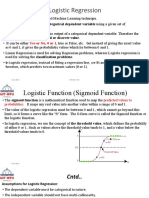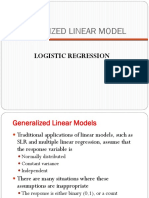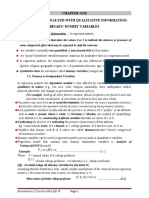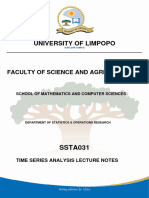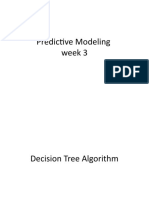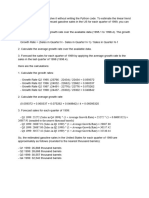0% found this document useful (0 votes)
10 views22 pagesML Logistic Regression Module3 Final
The document discusses binary logistic regression, a statistical method used to model relationships between independent variables and a binary dependent variable. It explains the mathematical foundations, including the odds and log-odds, and introduces the sigmoid function for estimating probabilities. Additionally, it covers the use of Maximum Likelihood Estimation (MLE) for estimating the model parameters.
Uploaded by
backupvedant2612Copyright
© © All Rights Reserved
We take content rights seriously. If you suspect this is your content, claim it here.
Available Formats
Download as PDF, TXT or read online on Scribd
0% found this document useful (0 votes)
10 views22 pagesML Logistic Regression Module3 Final
The document discusses binary logistic regression, a statistical method used to model relationships between independent variables and a binary dependent variable. It explains the mathematical foundations, including the odds and log-odds, and introduces the sigmoid function for estimating probabilities. Additionally, it covers the use of Maximum Likelihood Estimation (MLE) for estimating the model parameters.
Uploaded by
backupvedant2612Copyright
© © All Rights Reserved
We take content rights seriously. If you suspect this is your content, claim it here.
Available Formats
Download as PDF, TXT or read online on Scribd
/ 22




